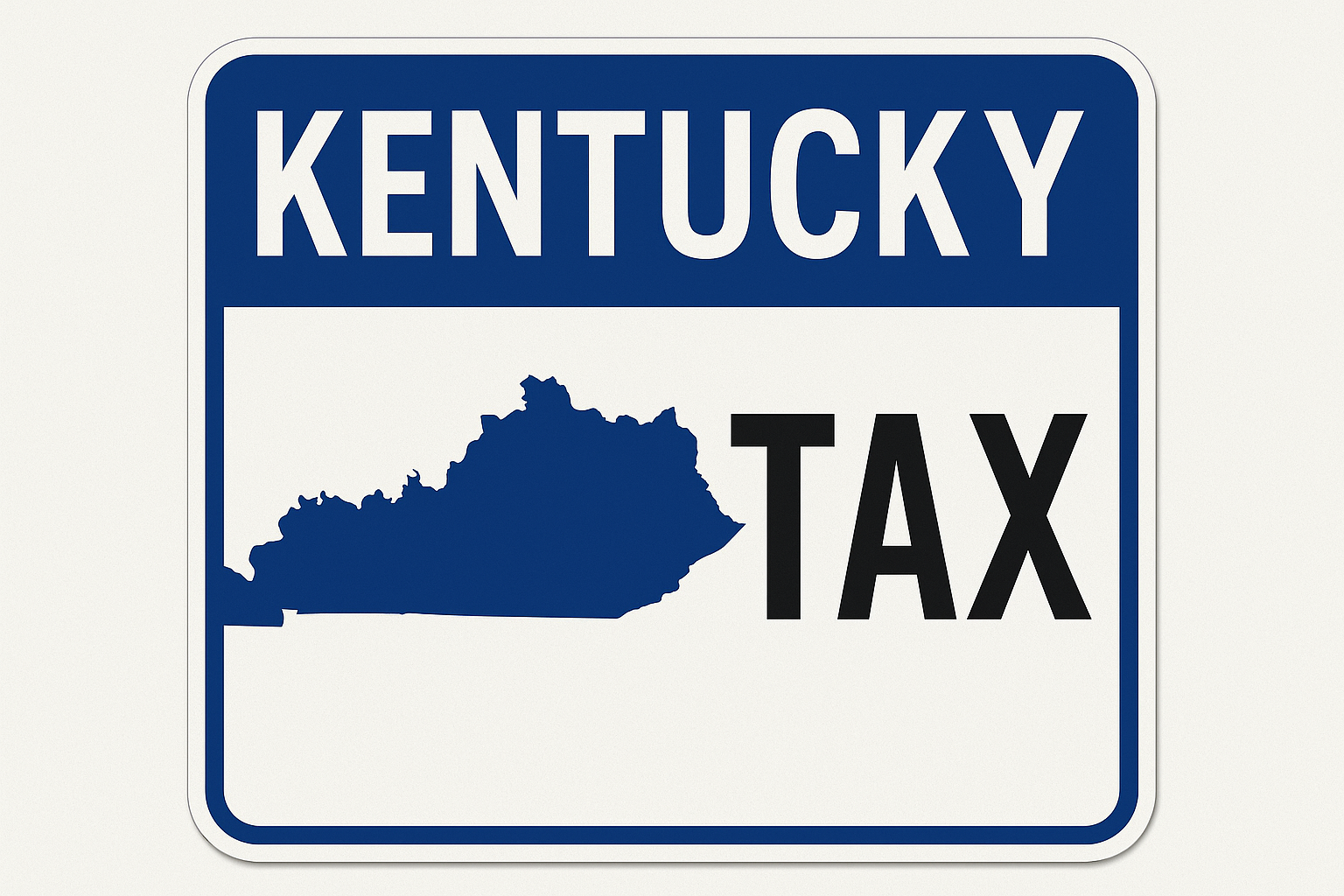One Big Beautiful Bill Act: Key Tax Changes for 2025 and Beyond
Why the One Big Beautiful Bill Act Matters to Taxpayers and Advisors The One Big Beautiful Bill Act (OBBBA) is the most sweeping federal tax package...

Kentucky's tax transformation represents one of the most significant fiscal policy shifts in the state's recent history. The individual income tax rate remains at 4% for 2025, but legislation is already in place to reduce it to 3.5% effective January 1, 2026. This systematic approach aims to eventually eliminate the state income tax entirely, positioning Kentucky among the nine states with no individual income tax.
The reform strategy involves a careful balance: reducing income taxes while expanding the sales tax base to maintain essential government services. This shift from taxing production (income) to taxing consumption (sales) reflects a broader economic philosophy designed to enhance Kentucky's competitiveness and attract businesses and residents.
For calendar year 2025, Kentucky maintains its 4% flat individual income tax rate, unchanged from 2024. This rate applies to all income levels, representing a significant simplification from the previous graduated system that peaked at 6%.
The 2022 tax reform law (House Bill 8) established a trigger-based mechanism for future rate reductions. Under this system, the income tax rate can decrease by 0.5 percentage points annually, but only when specific fiscal conditions are met:
For 2025, Kentucky missed the second trigger requirement. While FY2023 revenues were strong, they weren't sufficient to satisfy the statutory formula for automatic rate reduction. This prudent approach ensures Kentucky doesn't jeopardize its budget stability while pursuing tax cuts.
Despite the pause in 2025, Kentucky taxpayers can expect meaningful tax relief in 2026. The required revenue triggers were successfully met by the end of fiscal year 2024, clearing the path for the next scheduled reduction.
Kentucky's strong fiscal performance made this possible:
Recognizing these favorable conditions, lawmakers acted swiftly during the 2025 legislative session. House Bill 1 passed with bipartisan support and became law in early 2025, officially setting the individual income tax rate at 3.5% effective January 1, 2026.
Kentucky's Republican supermajority has been explicit about their ultimate goal: complete elimination of the state individual income tax. This ambitious objective would place Kentucky among a select group of nine states with no tax on individual income, including Tennessee, Texas, and Florida.
The systematic approach outlined in House Bill 8 provides a roadmap for achieving this goal through measured 0.5% reductions, with additional flexibility built in for smaller incremental cuts (0.25% or 0.1%) as rates approach zero.
While supporters argue that eliminating the income tax is feasible with disciplined budgeting and continued economic growth, legislative leaders acknowledge increasing complexity as rates decline. As House Speaker David Osborne noted, "growth will not carry us beyond 3% [income tax] in the foreseeable future... every other state that has gone to zero has dramatically increased sales taxes."
This recognition underscores the need for realistic planning and potential revenue replacement strategies as the state approaches its zero-income-tax goal.
Kentucky's approach to tax reform explicitly connects income tax reduction with sales tax base expansion. This strategy ensures the state can maintain essential services while transitioning to a consumption-based tax system.
The expansion of Kentucky's 6% sales tax has occurred in phases:
Kentucky's corporate income tax remains at 5% for C-corporations, unchanged by the individual tax overhaul. However, C-corporations may benefit indirectly from economic growth spurred by individual tax reductions.
As Kentucky progresses toward potential income tax elimination, each additional rate cut becomes more challenging to offset with economic growth alone. Further broadening of the sales tax or implementation of new revenue sources may be necessary, and the strategy must remain viable during economic downturns when revenue growth slows.
The confirmed reduction to 3.5% in 2026, combined with the long-term vision of income tax elimination, creates both opportunities and challenges for taxpayers.
For individuals, the changes mean more take-home pay and simplified tax calculations, but also the need for careful planning around income timing and withholding adjustments. Businesses face new compliance requirements for sales tax collection while gaining opportunities through the PTET election and potential economic growth benefits.
Success in navigating these changes requires staying informed, planning ahead, and working with qualified tax professionals. As Kentucky continues its ambitious tax reform journey, taxpayers who understand and adapt to these changes will be best positioned to benefit from the state's evolving fiscal landscape.
With Kentucky’s tax code in transition, proactive planning is more important than ever. Baldwin CPAs is here to help you understand the new rules, adjust your strategies, and ensure full compliance with both income and sales tax requirements. Contact us today to prepare for 2025 and beyond.
Kentucky's individual income tax rate is 4% for 2025, applied as a flat rate to all income levels.
The individual income tax rate will decrease to 3.5% effective January 1, 2026, as established by House Bill 1 passed in the 2025 legislative session.
The exact savings depend on your income level. The 0.5% reduction means you'll save $5 for every $1,000 of Kentucky taxable income. For example, if you have $50,000 in Kentucky taxable income, you'll save $250 annually.
The 2022 tax reform law requires specific fiscal triggers to be met before rate reductions can occur. While Kentucky's rainy day fund exceeded requirements, actual revenues didn't meet the statutory formula for automatic reduction in 2025.
Kentucky's Republican leadership has stated this as their long-term goal, but achieving zero income tax will require careful planning and likely additional revenue sources to replace lost income tax revenue.
Over 30 service categories became taxable in 2023, including personal fitness training, marketing services, website design, photography, telemarketing, courier services, and many others. Check with the Kentucky Department of Revenue for the complete list.
If your business provides services that became taxable under recent legislation, you must register for a Kentucky sales tax permit and collect 6% sales tax from customers. Consult the Kentucky Department of Revenue's guidance or speak with a tax professional.
The PTET election allows S-corporations, partnerships, and LLCs to pay Kentucky tax at the entity level rather than passing it through to owners. This can provide federal tax savings by bypassing the $10,000 SALT deduction cap.

Why the One Big Beautiful Bill Act Matters to Taxpayers and Advisors The One Big Beautiful Bill Act (OBBBA) is the most sweeping federal tax package...
Section 36 of House Bill 487, which goes into effect July 1, contains language that imposes sales and use tax on certain services. Due to a recent...

The Kentucky Department of Revenue introduced its revamped Taxpayer Portal at MyTaxes.ky.gov in March, unifying key tax-related functions previously...